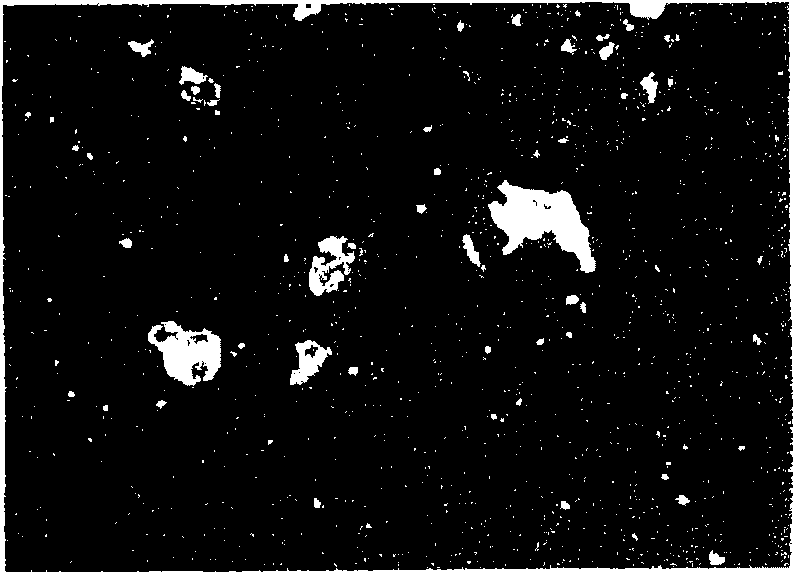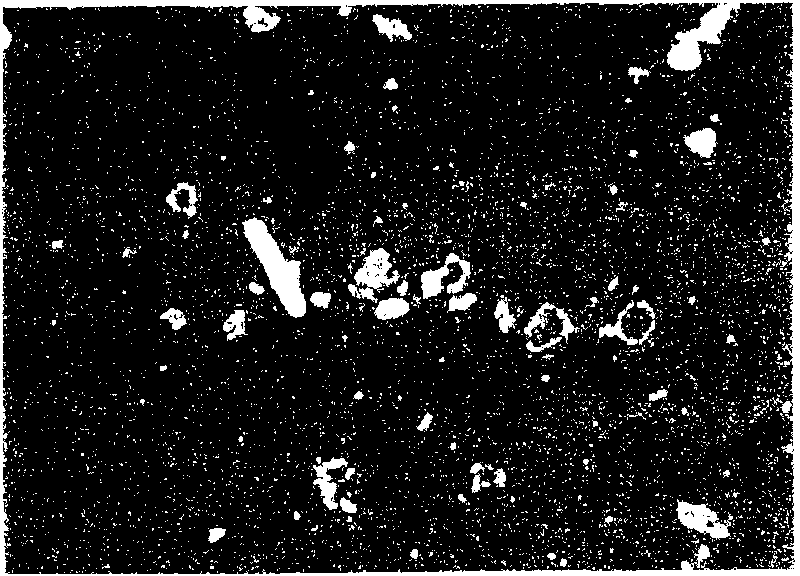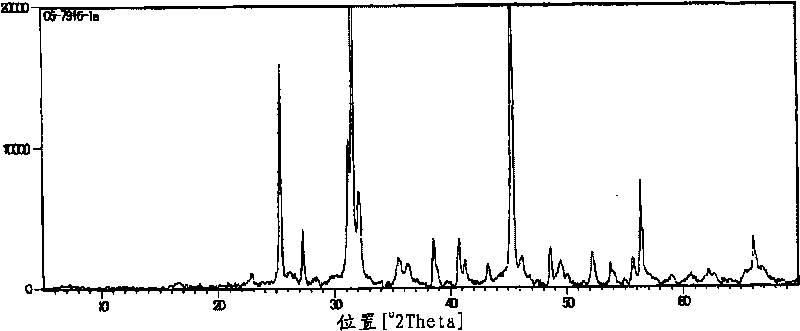Carbon/aluminum composite compound and inorganic compound coated with carbon/aluminum composite compound
An inorganic compound and aluminum composite technology, applied in the direction of solid waste removal, etc., can solve the problems of inability to obtain heat resistance, flame retardant conductivity, etc., and achieve the effect of reducing quantity, excellent conductivity and saving energy.
- Summary
- Abstract
- Description
- Claims
- Application Information
AI Technical Summary
Problems solved by technology
Method used
Image
Examples
Embodiment 1
[0105]
[0106] Heat and dissolve 25 parts by mass of sucrose in 25 parts by mass of water at 50° C., add 50 parts by mass of PAC (manufactured by Oji Paper Manufacturing Co., Ltd., “PAC” (10 to 11 mass % in terms of aluminum content)) thereto, and stir and mix uniformly . Hereinafter, the aqueous solution thus obtained is simply referred to as "XSP".
[0107] 100 g of XSP was put into a tray with a thickness of 2 mm, and after standing at 20° C. for 5 hours, a burner was used to directly contact the surface of the sample with a flame of 1300° C. to perform calcination. Calcination is carried out in air. Insert the K thermocouple thermometer sheath near the surface layer of the sample, and the measured temperature is 750-880°C. Twenty minutes after the burner was exposed to the flame, a uniform black granular carbon-aluminum composite compound was obtained.
Embodiment 2
[0109]
[0110] In Example 1, except having used 25 mass parts of rice flour instead of 25 mass parts of sucrose, it carried out similarly to Example 1, and obtained the carbon-aluminum composite compound.
Embodiment 3
[0112]
[0113] 50 parts by mass of XSP, 45 parts by mass of borax and 55 parts by mass of water were uniformly stirred and mixed. 50 g of this liquid was put in a dish with a thickness of 20 mm, and left still at 20° C. for 28 hours. Microcrystals of borax were precipitated on the surface, and in this state, the burner started to touch the flame in the same manner as in Example 1. Calcined at 1500°C for 5 minutes to obtain a carbon-aluminum composite compound.
PUM
| Property | Measurement | Unit |
|---|---|---|
| length | aaaaa | aaaaa |
| length | aaaaa | aaaaa |
| refractive index | aaaaa | aaaaa |
Abstract
Description
Claims
Application Information
 Login to View More
Login to View More - R&D
- Intellectual Property
- Life Sciences
- Materials
- Tech Scout
- Unparalleled Data Quality
- Higher Quality Content
- 60% Fewer Hallucinations
Browse by: Latest US Patents, China's latest patents, Technical Efficacy Thesaurus, Application Domain, Technology Topic, Popular Technical Reports.
© 2025 PatSnap. All rights reserved.Legal|Privacy policy|Modern Slavery Act Transparency Statement|Sitemap|About US| Contact US: help@patsnap.com



